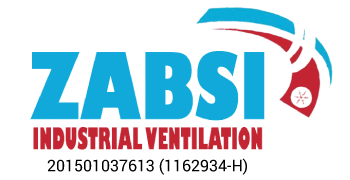Hoods and Enclosures: Key Components of Effective Local Exhaust Ventilation Systems
When it comes to maintaining a safe and healthy workplace, controlling airborne contaminants is crucial. One of the most effective ways to achieve this is through Local Exhaust Ventilation (LEV) systems. Among the essential components of these systems are hoods and enclosures, which play a vital role in capturing pollutants right at their source.
Hoods: The Unsung Heroes of LEV Systems
Hoods are the frontline warriors in any LEV system. These devices are strategically placed near the emission source to capture contaminants before they can spread. Different types of hoods serve different purposes:
-
Capturing Hoods: Positioned close to the source, these hoods are perfect for operations like welding, where pollutants are released into the air. They act swiftly to snatch up contaminants as soon as they emerge.
-
Receiving Hoods: Ideal for processes where emissions are directed in a specific path, such as grinding. These hoods catch pollutants as they travel, directing them into the ductwork.
-
Enclosing Hoods: Partially or fully enclosing the emission source, these hoods are great for containing pollutants. Think of them as safety nets for processes like chemical mixing, where hazardous fumes are involved.
-
Canopy Hoods: Mounted above the emission source, canopy hoods capture rising contaminants like heat, steam, and fumes. They're commonly used in kitchens and labs to keep the air clean and breathable.
Enclosures: Taking Containment to the Next Level
While hoods are effective, enclosures offer an additional layer of protection by creating a controlled environment around the emission source. Enclosures come in two main types:
-
Partial Enclosures: Surrounding the source on several sides while leaving some areas open, these enclosures strike a balance between accessibility and containment. Think of fume cupboards and lab hoods.
-
Full Enclosures: Completely encasing the emission source, these enclosures are the gold standard for hazardous environments. They're used in situations involving toxic chemicals or radioactive materials, such as in glove boxes and isolation chambers.
Designing for Success
The effectiveness of hoods and enclosures depends on thoughtful design:
- Proximity: The closer the hood is to the emission source, the better it captures contaminants.
- Shape and Size: The design should suit the specific contaminants and processes involved.
- Airflow and Velocity: Proper airflow is crucial to draw contaminants in without causing turbulence.
Conclusion
Hoods and enclosures might not always get the spotlight, but they are indispensable in maintaining a safe workplace. By capturing and containing airborne contaminants at the source, they help reduce exposure to hazardous substances. Whether you're in an industrial setting or a lab, investing in the right LEV system components can make all the difference in ensuring a healthier environment for everyone.
So next time you see a hood or an enclosure in action, you'll know they're doing a lot more than just sitting there—they're actively protecting your workspace.
15 May 2024







